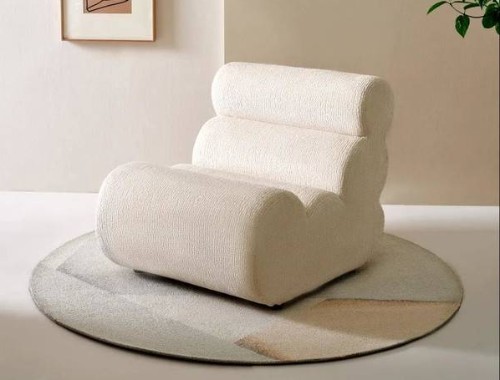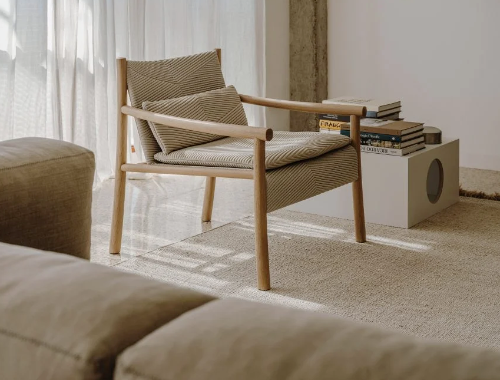Office-furniture industry sees bump in sales
Companies might not be hiring many people. But they are beginning to restart projects that were put on hold for the past three or four years and upgrade their tired interiors.
Companies might not be hiring many people. But they are beginning to restart projects that were put on hold for the past three or four years and upgrade their tired interiors.

Hoang Ngo cuts fabric at Open Plan Systems, which saw business rebound in 2010. The firm takes old workstations and cubicles and remakes the furniture to look new.

Phuong Le (left) and Loan Nguyen staple fabric to a remanufactured office panel at Open Plan Systems in South Richmond.
That activity is reflected in a number that most people don't track or see regularly: U.S. office-furniture shipments.
Furniture shipments rose 25.6 percent in the first quarter from the same period a year ago, according to the Business and Institutional Furniture Manufacturer's Association.

Wallace "Jerry" W. Epperson Jr.
"It could be just a bump, but it's a big bump, and everyone is grinning all the way to the bank," said furniture-industry analyst Wallace "Jerry" W. Epperson Jr. of Mann, Armistead & Epperson in Richmond.
"The big driving factor is always corporate profits, and if companies make more, like people, they tend to spend more," Epperson said.
The trade association's annual conference, which wrapped up this past week in Chicago, was well-attended and a lot of new products were introduced, he said.

Greg Campbell
Smarter Interiors, an office-furniture dealer in Richmond, has kept 30 installers busy since the beginning of the year, said Greg Campbell, a partner in the firm.
He and business partner Randy Alderson saw the approaching crash in commercial real estate about three years ago and changed their business model, going after government contracts at Fort Lee and other military bases.
When the economy was booming, their work was in the private sector. Work in that sector is picking up again, Campbell said.
Their first military contract, awarded in 2009, was to equip space for 800 office workers in three buildings at Fort Lee. The job required 65 tractor-trailer loads of furniture — a huge project, by any measure.
"We got very lucky. We were in the right place at the right time," Alderson said.
Office-vacancy rates at the time were marching to new highs, peaking at 18.5 percent in the Richmond area in the second quarter of 2010, as companies cut workers and needed less space and stopped spending. Some simply closed.
"The first quarter in 2010 was the worst ever in the furniture industry," Alderson said. "I've known people in this industry for years — architects, designers, landscape architects who may not come back."
Even with orders rising again, it doesn't mean happy days are here again, industry experts say.
"Things are picking up, but who knows what the future holds. Let's hope it doesn't get worse," Alderson said.
Bob DeLille, chief executive officer of Creative in Hanover County, said the office-furniture sector took a significant hit, and he is not optimistic that it will grow significantly any time soon.
It has kept afloat in the past couple of years by customers in federal government, higher education and health care, sectors not as affected by an ailing economy as other businesses, he said.
DeLille's company adjusted by right-sizing, he said, and focusing on a growing segment: the audio-visual business.
The office-furniture industry itself is surprised at the surging numbers, especially since the market for residential furniture is still weak, analyst Epperson said.
Residential furniture relies on a good housing market, consumer confidence and the availability of credit — none of which is happening with any certitude.
And yet, major office-furniture makers Steelcase Inc., Henry Miller Inc., HNI Corp. and Knoll Inc. are reporting rising revenues in some cases of 25 percent or more this year compared with a year ago.
Unlike other industries that have shipped production offshore, more than 80 percent of office furniture is made in the U.S.
In this past business cycle, companies cut expenses to the bone, sliced debt levels and cut overhead, so many have plenty of room to grow, Epperson said.
Some might not be buying furniture for more people, but many are putting money into workstations that lead to more productivity, he said.
Others are buying the basics — chairs, filing cabinets and cubicles — because after three years, stuff wears out and needs to be replaced, Epperson said.
Dean Williams, owner of Open Plan Systems, said his furniture-remanufacturing business in South Richmond rebounded in 2010, and it continues to grow in 2011.
His firm takes old workstations and cubicles from across the country, refinishes metals, replaces fabrics and work surfaces and remakes the furniture to look new.
Products are sold at a 35 percent to 40 percent discount to new furniture, providing a green solution for companies looking to save money, Williams said.
As companies lease space, they need to update it, which is good for the tenant-improvement business, information-technology and office-furniture sectors.
Huge blocks of space in the Richmond area are being leased, and the office-vacancy rate is on track to fall from 17.1 percent in the first quarter to below 15 percent by year's end, said William E. Bradley, a research analyst for CB Richard Ellis in Richmond.
However, the movement is with major companies, not small- to medium-size companies, he said.
They include travel insurer Mondial Assistance USA taking 238,000 square feet in the former headquarters of defunct Circuit City Stores Inc. in Henrico County and SunTrust Banks Inc. taking 90,000 square feet in the former LandAmerica Financial Corp. headquarters in the Innsbrook Corporate Center in Henrico.
"The big guys make the news, but we need smaller tenants to keep growing — that is a large portion of the business," Bradley said.
-

Quanyou teamed up with the fashion brand ANNAKIKI to launch a new joint product!
-

Outer, an outdoor furniture brand founded by Chinese, enters the Australian market
-

National Bureau of Statistics: The retail sales of furniture in the first three quarters reached 120.5 billion, an increase of 20.7%
-

Enveloping lounge chairs and lightweight office chairs from Arper feature

 沪公网安备31010402003309号
沪公网安备31010402003309号



